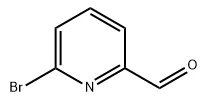- This topic is empty.
-
AuthorPosts
-
17/09/2025 at 18:17 #7851
6-Bromopyridine-2-carbaldehyde is an important heterocyclic organic compound widely used in pharmaceutical synthesis, advanced materials development, and chemical research. Known by its CAS No. 34160-40-2 and Einecs No. 608-952-4, this compound is often supplied in 98% purity, ensuring reliability for both laboratory research and industrial-scale applications. With the molecular formula C₆H₄BrNO and a molecular weight of 186.01 g/mol, it has become a trusted intermediate in organic synthesis.
Its appearance ranges from white to beige or light brown crystalline powder, making it easy to handle and store under controlled conditions. Due to its versatility and high stability, 6-bromopyridine-2-carbaldehyde has found applications across drug development, material science, and catalytic studies. In this blog post, SACH, a high purity organic synthetic intermediate manufacturing factory, will share the research value of 6-bromopyridine-2-carbaldehyde for sale.
Physical and Chemical Properties of 6-Bromopyridine-2-Carbaldehyde
Understanding the physical and chemical data of 6-bromopyridine-2-carbaldehyde (CAS No. 34160-40-2) is essential for its effective application.
* Molecular Formula: C₆H₄BrNO
* Molecular Weight: 186.01 g/mol
* Appearance: White to beige/light brown crystalline powder
* Purity Standard: 98% minimum
* Melting Point: 81–85 °C (lit.)
* Boiling Point: 248.2 ± 20.0 °C (predicted)
* Density: 1.683 ± 0.06 g/cm³ (predicted)
* Storage Conditions: 2–8 °C
* Solubility: Soluble in chloroform, methylene chloride, dichloromethane, ether, ethyl acetate, and methanol
* Acidity Coefficient (pKa): 1.00 ± 0.10 (predicted)
These properties make it a robust and dependable intermediate for researchers requiring a high-performance building block in synthesis.

Product Introduction: Features of 6-Bromopyridine-2-Carbaldehyde
The product profile of 6-bromopyridine-2-carbaldehyde (CAS No. 34160-40-2) highlights why it is in high demand in both research and industrial chemistry.
1. Appearance & Stability: The crystalline powder is thermally and chemically stable, ensuring safe handling.
2. High Purity: Typically supplied with 98% purity, guaranteeing consistent results in synthetic reactions.
3. Storage Efficiency: Easy to store under standard laboratory refrigeration conditions (2–8 °C).
4. Versatility: A key intermediate that contributes to drug synthesis, catalytic research, and materials science.
Synthetic Routes of 6-Bromopyridine-2-Carbaldehyde
Several synthetic pathways have been developed to produce 6-bromopyridine-2-carbaldehyde, each with specific advantages.
* Method 1: From 2-Aminonicotinic Acid
Bromination introduces a bromine atom, followed by oxidation to form the aldehyde group, yielding 6-bromopyridine-2-carbaldehyde as the final product.
* Method 2: From 2-Chloronicotinic Acid
Similar bromination and oxidation reactions are employed, starting from a chlorinated pyridine derivative, to produce the desired aldehyde.
Both methods ensure the compound retains its structural integrity, making it suitable for various downstream reactions.
Applications of 6-Bromopyridine-2-Carbaldehyde in Organic Synthesis
The primary role of 6-bromopyridine-2-carbaldehyde (CAS No. 34160-40-2) lies in its function as an organic synthesis intermediate. It facilitates the construction of structurally diverse and biologically active molecules.
* Drug Molecule Synthesis: It plays a crucial role in pharmaceutical research, enabling the creation of novel therapeutic agents.
* Ligand Development: An essential precursor for synthesizing tri\[(pyridyl)methyl]amine ligands, widely applied in asymmetric catalysis and metal complex formation.
* Catalytic Research: It has been studied in rhodium-catalyzed reducing aldol reactions, generating cis β-hydroxyenone intermediates with synthetic importance.
Importance of 6-Bromopyridine-2-Carbaldehyde in Drug Discovery
One of the most significant uses of 6-bromopyridine-2-carbaldehyde is in pharmaceutical development.
* Intermediate for Active Molecules: Its functional groups allow selective modifications that yield new drug scaffolds.
* Therapeutic Innovation: It helps chemists explore diverse molecular frameworks, aiding in the discovery of new treatment options.
* Reliable Supply: With strict quality control and standard packaging (25 kg/drum), it supports both small-scale laboratory trials and industrial-scale synthesis.
6-Bromopyridine-2-Carbaldehyde in Materials Science
Beyond pharmaceuticals, 6-bromopyridine-2-carbaldehyde contributes significantly to advanced materials research.
* Conductive Polymers: Serves as a precursor in the creation of polymers with enhanced electrical conductivity.
* Liquid Crystals: Helps construct molecular structures with unique optical and mechanical properties.
* High-Performance Materials: A valuable reagent for developing specialty materials with applications in electronics, coatings, and sensors.
Advantages of Using 6-Bromopyridine-2-Carbaldehyde in Research
Researchers prefer 6-bromopyridine-2-carbaldehyde for several reasons:
1. High Purity & Quality Control – Guarantees reproducible results.
2. Versatility Across Fields – Applicable in drug design, catalysis, and material sciences.
3. Stable Supply Chains – Multiple suppliers ensure reliable availability.
4. Ease of Use – With well-defined physical properties and solubility, it integrates smoothly into existing synthetic protocols.
Packaging and Handling of 6-Bromopyridine-2-Carbaldehyde
To ensure safety and stability, the compound is packaged in 25 kg drums. Proper storage at 2–8 °C ensures its chemical integrity is preserved over time. Researchers handling this compound are advised to follow standard laboratory safety procedures, particularly when working with halogenated aldehydes.
Conclusion
In conclusion, 6-bromopyridine-2-carbaldehyde (CAS No. 34160-40-2) is more than just an intermediate—it is a foundation compound in pharmaceuticals, advanced materials, and catalytic chemistry. Its high purity, versatile applications, and stable properties make it a cornerstone reagent in modern organic synthesis.
-
AuthorPosts
- You must be logged in to reply to this topic.

 Google hit with record EU fine over Shopping service
Google hit with record EU fine over Shopping service  Business booming for giant cargo planes
Business booming for giant cargo planes  Trump-Putin: The understandable story
Trump-Putin: The understandable story